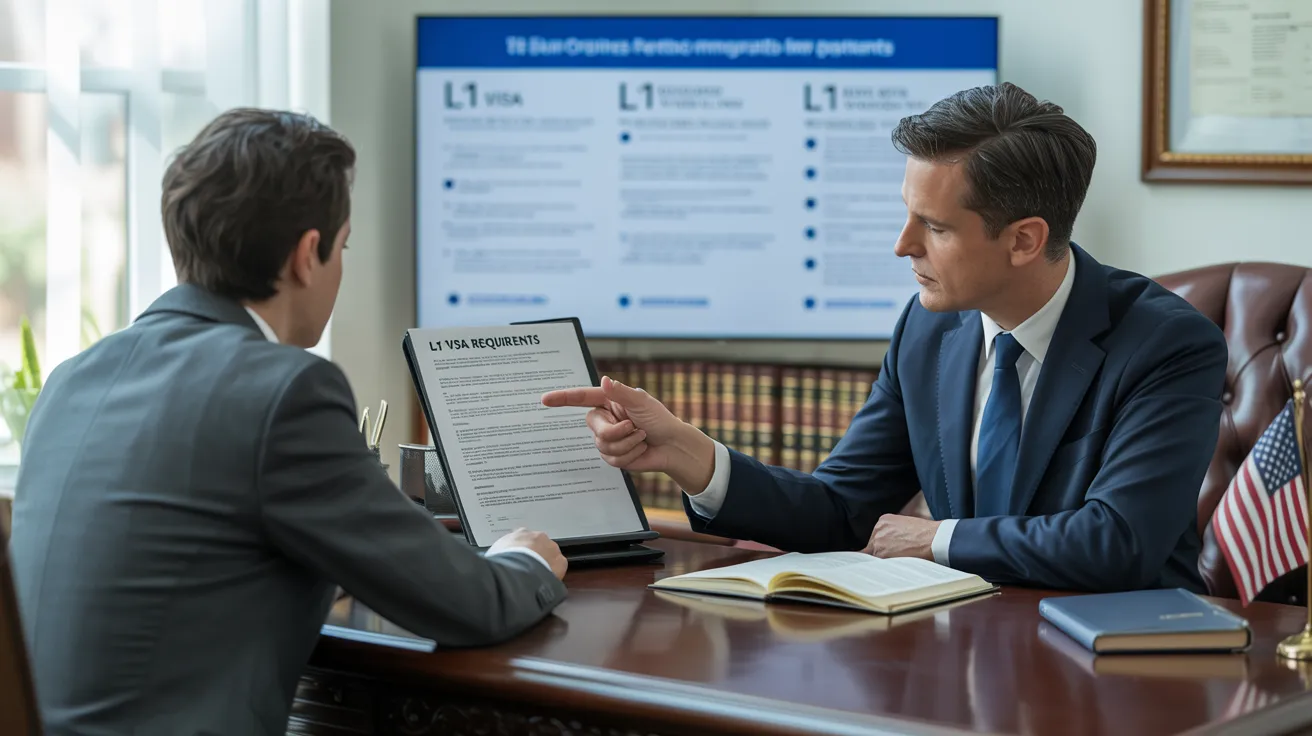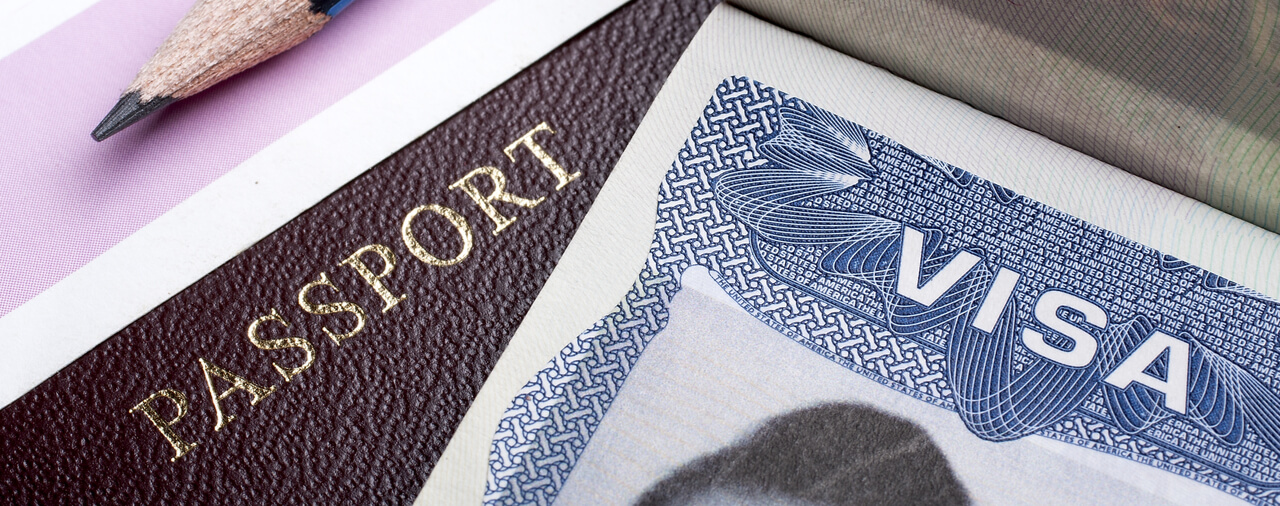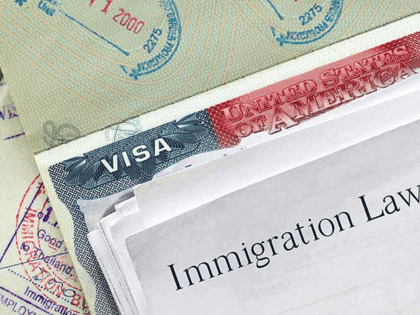L1 Visa Process
Unlocking Opportunities: A Comprehensive Guide to the L1 Visa Process
The L1 visa procedure presents a vital path for multinational business looking for to transfer key workers across boundaries. Recognizing the subtleties of qualification requirements, the differences in between L-1A and L-1B visas, and the details of the application process can substantially influence a candidate's success. Maneuvering this complex landscape is not without its difficulties, and mindful focus to documents and employer sponsorship is essential. As we discover the vital elements of this process, the methods for getting rid of prospective obstacles will come to be noticeable, revealing just how educated prep work can open a globe of opportunities.
Recognizing the L1 Visa
Understanding the L1 visa involves identifying its significance as a vital tool for multinational business seeking to transfer knowledgeable employees in between international offices. This non-immigrant visa classification assists in the motion of executives, supervisors, and specialized knowledge workers to the United States, thereby enabling organizations to maintain operational continuity and harness international ability efficiently. The L1 visa is divided into two main categories: L-1A for managers and executives, and L-1B for workers possessing specialized knowledge.The L1 visa offers an essential duty in enhancing a business's one-upmanship in the global industry - L1 Visa. By enabling business to relocate their crucial workers, organizations can ensure that critical tasks are managed by certified people that are currently accustomed to the firm's society and functional procedures. This internal transfer mechanism not only promotes expertise sharing but likewise advertises advancement and cooperation across borders.Moreover, the L1 visa is typically favored for its reasonably simple application procedure contrasted to various other visa categories, as it permits dual intent, permitting holders to seek permanent residency while on a short-lived copyright. This feature makes the L1 visa particularly appealing for both employers and employees, as it simplifies the path for proficient experts to establish lasting residency in the United States
Qualification Criteria
Qualification for the L1 visa rests on a number of key criteria that ensure both the employee and the employer meet particular qualifications. This non-immigrant visa is designed for international business to transfer workers from consular services to U.S. counterparts.Firstly, the company has to be a certifying organization, that includes a moms and dad business, branch, associate, or subsidiary of an U.S. company. The business needs to have been doing service for at least one year both in the united state and abroad. This guarantees that the firm has sufficient functional stability and a legitimate presence.Secondly, the worker needs to hold a managerial, exec, or specialized knowledge setting. For L1A visas, the candidate must show managerial or executive certifications, while L1B visas concentrate on specialized understanding pertaining to the organization's items, services, or procedures. In addition, the worker has to have benefited the foreign entity for at least one continuous year within the last three years before their application.Lastly, the staff member's role in the united state should straighten with their previous placement, making sure that their skills and competence are leveraged for the firm's advantage.
Kinds Of L1 Visas
The L1 visa category comprises 2 key kinds designed to help with the transfer of staff members within multinational companies: the L1A visa for managers and executives, and the L1B visa for staff members with specialized understanding. Each kind offers unique functions and has specific qualification criteria.The L1A visa is customized for individuals that hold managerial or executive positions within a business. This visa allows top-level employees to move to a united state branch, subsidiary, or associate of the same company. Candidates for the L1A visa have to show that they have been utilized in a managerial or executive ability for a minimum of one constant year within the previous three years before their application. In addition, this visa supplies a much longer period of remain, originally granted for 3 years, with the opportunity of expansions for as much as 7 years.In comparison, the L1B visa is meant for experts with specialized understanding pertaining to the business's products, solutions, or processes. To qualify, applicants need to show that their knowledge is critical to the company which they have benefited a minimum of one continuous year within the last 3 years in a role that required this specialized expertise. The L1B visa is initially approved for three years, with expansions offered for up to 5 years.Both visa types are essential for companies looking for to improve their global operations by leveraging competent workers, therefore promoting advancement and effectiveness within the united state market.
Application Process
Guiding with the L1 visa process includes numerous crucial actions that have to be meticulously followed to assure an effective outcome. The process begins with the united state employer, who should initially establish qualification by demonstrating a certifying partnership with the international entity and confirming that the worker fulfills the specific demands for the L1 visa group being sought.Once eligibility is validated, the company initiates the procedure by submitting Type I-129, the Petition for a Nonimmigrant Employee, with the U.S. Citizenship and Migration Services (USCIS) This form should be accompanied by a detailed summary of the job responsibilities to be done, the organizational structure of both the united state and international entities, and the employee's qualifications. It's essential to validate that all info is exact and complete, as noninclusions or errors can result in delays or denials.Upon approval of the I-129 request, the following step involves the employee obtaining the L1 visa at a united state embassy or consular office in their home country. This phase calls for the completion of Kind DS-160, the Online Nonimmigrant Visa, and scheduling an interview. During the interview, the applicant needs to offer evidence supporting their certifications and the employer's petition.After the visa is granted, the employee can get in the USA to work in the assigned duty. On the whole, careful prep work and adherence to every step of the application process are crucial for an effective L1 visa outcome.
Called for Paperwork

Necessary Types Required
Steering the L1 Visa procedure needs mindful attention to the vital types and documents necessary for a successful application. The primary type needed is the Type I-129, Request for a Nonimmigrant Worker, which must be completed and submitted by the U.S. company. This type describes the information of the employment offer and the certifications of the employee looking for the L1 Visa.Alongside Type I-129, the candidate will require to total Form I-539 if coming with relative are likewise making an application for visas. In addition, the employer must offer evidence of the certifying connection between the united state entity and the international entity, usually requiring the submission of company records such as write-ups of unification or monetary statements.Moreover, it is important to consist of the L Category Supplement to Form I-129, which specifies the kind of L Visa being requested-- either L-1A for managers and executives or L-1B for employees with specialized understanding. Lastly, applicants should assure that all types are authorized and dated appropriately, as incomplete entries check here can lead to hold-ups or rejections. Appropriately assembling these important kinds lays the structure for a smoother L1 Visa procedure.

Supporting Proof Requirements
Sustaining documents is vital for a successful L1 Visa, as it confirms the cases made in the request. Candidates must supply a series of papers to show eligibility for the visa, which is categorized right into two key kinds: proof of the certifying connection between the U.S. and foreign entities and evidence of the applicant's qualifications.To establish the partnership, applicants ought to send paperwork such as business business graphes, monetary declarations, and proof of possession. These files verify that the international company has a qualifying connection with the united state company, whether as a moms and dad company, subsidiary, branch, or affiliate.For the applicant's credentials, essential papers consist of a thorough employment letter from the international company, laying out the applicant's job title, responsibilities, and duration of work. Furthermore, educational qualifications, such as degrees and diplomas, must be supplied to confirm the candidate's experience in the pertinent area.
Company Sponsorship Documents

Common Challenges
Maneuvering the L1 visa procedure presents numerous common obstacles that applicants need to recognize. Trick issues typically include rigorous paperwork requirements, possible delays in processing times, and the need for rigorous lawful conformity. Recognizing these obstacles can help applicants much better prepare and reduce dangers throughout their visa trip.
Documents Needs
The L1 visa process typically provides substantial challenges associated with documents demands. Candidates have to give extensive paperwork to develop qualification, which can result in complication and prospective hold-ups. Trick papers include evidence of a qualifying connection between the U.S. and foreign company, proof of the applicant's work background, and detailed details about the task function in the U.S.One usual difficulty is collecting enough evidence to show the nature of the certifying partnership. Business typically battle to present clear organizational graphes or monetary declarations that highlight the link in between the entities. Furthermore, ensuring that letters of support from employers accurately mirror the applicant's task tasks and credentials is essential, as obscure summaries can cause denials.Another problem occurs from the requirement for detailed work summaries that line up with the L1 visa classifications. Candidates should articulate not just their current duty however likewise their supervisory or specialized knowledge obligations plainly. This demands a comprehensive understanding of both the candidate's position and the regulatory language used in L1 visa.
Handling Time Hold-ups
Experiencing delays in handling times is a typical challenge faced by L1 visa applicants, often resulting in frustration and uncertainty. Numerous aspects add to these hold-ups, including high application volumes, enhanced examination of applications, and management stockpiles within the united state Citizenship and Immigration Solutions (USCIS) Applicants might find that handling times can differ substantially relying on the service facility managing their application, as each center has its very own work and efficiency degrees. Furthermore, the intricacy of the candidate's situation, such as the demand for comprehensive documentation or information, can further prolong wait times.In some circumstances, issues connected to the applicant's existing immigration standing or previous visa background might additionally lead to added delays, as USCIS might call for additional review or information. It is essential for candidates to continue to be proactive during this duration, maintaining open communication with their employers and legal agents to resolve any type of potential concerns promptly.Understanding these handling time challenges can aid L1 visa applicants plan for possible delays and minimize the impact on their change and career strategies. Persistence and diligence are vital virtues in maneuvering this intricate procedure.
Lawful Conformity Issues
Lots of L1 visa candidates encounter legal conformity concerns that can complicate their trip towards obtaining the visa. Recognizing and adhering to the particular regulations established by the united state Citizenship and Migration Services (USCIS) is crucial. Usual difficulties include showing the qualifying relationship in between the international and U.S. companies, as well as verifying that the candidate has the requisite specialized expertise or managerial capacity.Additionally, applicants have to provide comprehensive documents describing their work tasks, corporate structure, and financial feasibility of the united state entity. Poor or unreliable paperwork can result in hold-ups or even rejections. Employers should likewise assure that they abide by labor regulations, consisting of wage and functioning condition criteria, which can influence visa eligibility.Another typical issue includes preserving compliance with the terms of the visa when provided. Changes in employment condition, work obligations, or firm framework can require modifications to the visa, which otherwise resolved without delay can cause legal difficulties. Therefore, staying informed concerning compliance demands and looking for legal guidance when essential is vital to browse the complexities of the L1 visa process effectively.
Tips for Success
Success in the L1 visa process frequently depends upon thorough prep work and focus to information. To enhance your possibilities of approval, start by completely understanding the qualification needs for both the L1A and L1B visa classifications. Evaluate whether your setting at the firm qualifies as supervisory, exec, or specialized knowledge, as this classification notably influences your application.Next, collect substantial paperwork that confirms your insurance claims. This includes organizational graphes, comprehensive work descriptions, and proof of the firm's operational structure. Clear and succinct proof of the qualifying relationship between the U.S. entity and the foreign entity is important. Verify that all documents are arranged logically and provided in an expert way, as this reflects your commitment and severity concerning the application.Engage the services of a seasoned migration lawyer who focuses on L1 visas. Their knowledge can verify invaluable, guiding you with complicated guidelines and assuring that all documents adheres to present regulations. In addition, plan for the meeting by practicing responses to usual questions and being prepared to review your duty and payments to the business detailed.
Regularly Asked Questions
Can Family Members Members Come With the L1 Visa Owner?
Yes, family members of L1 visa holders, consisting of spouses and single kids under 21, can come with the primary visa holder. They might also make an application for L2 visas, which permit them to stay in the United States.
How Much Time Can I Remain On an L1 Visa?
The L1 visa allows preliminary stays of approximately 3 years, with the opportunity of expansion. L1A visa holders might remain for a maximum of seven years, while L1B visa owners can continue to be for 5 years.
Can L1 Visa Owners Apply for a Permit?
Yes, L1 visa owners can get a permit. L1 Visa. They might pursue permanent residency with employment-based groups, usually requiring sponsorship from their company, offered they meet the required credentials and documentation demands
What Occurs if My L1 Visa Is Rejected?
If your L1 visa is denied, you might get a notification detailing the factors for rejection. You can seek to appeal the decision, reapply, or explore different visa options based upon your conditions.
Exist Any Kind Of Travel Restrictions With an L1 Visa?
An L1 visa typically permits for international travel; nevertheless, re-entry to the united state rests upon keeping valid standing. Vacationers should assure compliance with visa problems to avoid issues upon return
Verdict
